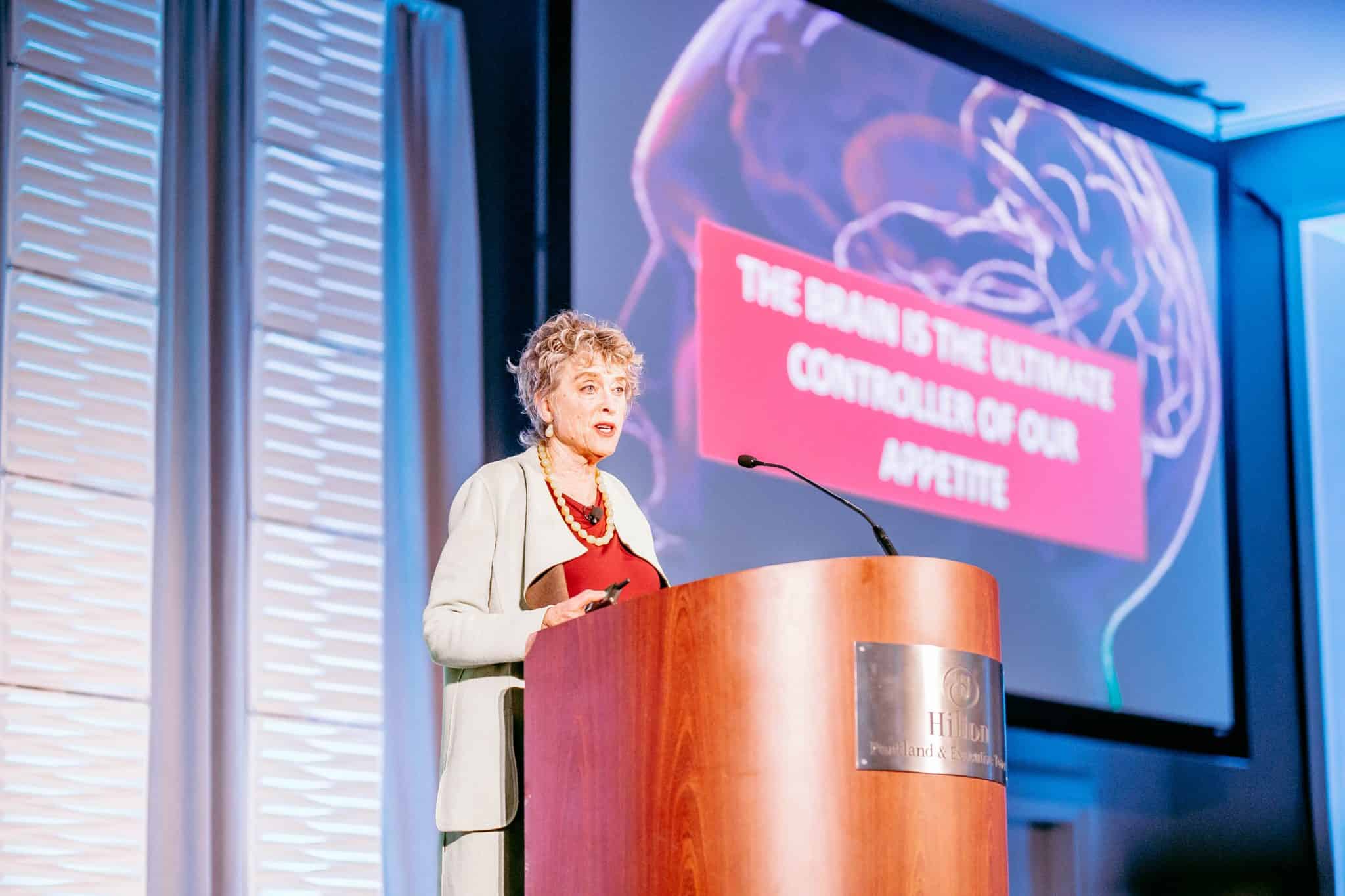Blog
Roots Conference Highlights by Julia Ross, M.A.


Transformations at the NTA’s Annual Conference, Roots
From February 28 through March 3 of 2019, I lived in NTA Land and had the most fun I’ve had in years. It was glorious to be around so many kindred spirits, learning from and teaching each other, and having such a good time doing it. (Keep in mind that I’d been holed up writing and researching my new book, The Craving Cure, for the four years prior.) I’d like to thank Brian Hoyer, in particular, for his insight into the EMF sensitivity problems that I have been experiencing myself since an intensive exposure while writing my book.
I’d like to report on some of the extraordinary responses to the amino acid trials that my staff and I conducted with NTPs, NTCs and exhibitors during the conference. I’ll include examples from the pre-conference workshop that I led with Laurie Hammer, NTP (Lead Instructor at our Neuro-Nutrient Therapy Institute). Of the forty participants crowded into our seminar room, all worked in dyads, trialed at least one amino acid themselves, and witnessed their dyad partners’ trialing experience. Every participant experienced at least one amazing improvement in food craving and/or mood during the four-hour process. The same was true for the fifty or more who trialed aminos at our exhibit booth (after filling out the assessment and contraindications questionnaires, of course).

- + A bright and thoughtful exhibitor reported having been in a great deal of emotional pain for the prior two years and was surviving on the comfort he got from the marijuana and junk food he was consuming several times a day. Using GABA, tryptophan, and DLPA together, he lost all his cravings and regained his natural sense of well-being (in 15 minutes). It’s still holding as he continues to report.
- + An attendee who’d suffered long-lasting problems after a serious concussion, lost the chronic, painful sensations in her forehead and was more mentally clear after taking only half of a 125 mg GABA sublingual.
- + A tense, negative attendee, obsessively worried about her troubled son, relaxed and opened up to the natural joy that had been trapped by her serotonin deficiency. How? During the Pre-Conference Workshop, she took one 500 mg capsule of tryptophan and began to smile radiantly. (The truth was that her son was actually starting to do well. She just couldn’t experience the positive reality without some amino help.)
- + A very driven and accomplished exhibitor raised his arms in the air 30 seconds after taking his GABA sublingual (125 mg) and said he was floating. When he added a single 500 mg capsule of tyrosine he went through the rest of the day without his usual need for caffeine. (He’s still reporting similar effects!)
- + Several dark-chocolate addicts suddenly lost interest after one or two 500 mg capsules of DLPA, the comfort-food craving eliminator, which allows the brain to provide comfort and pleasure naturally by increasing levels of our natural opiates, the endorphins.
- + A profoundly disturbed, though highly functional, exhibitor almost stumped us. It took us two days to crack his brain-code. He had symptoms that prompted us to try six different aminos with no benefit at all. Finally, we gave him three mini-tabs of Lithium Orotate and he began to smile with relief.
- + At least five hypoglycemic attendees perked right up and lost their need for instant sweets or starches after opening a pleasant tasting capsule of glutamine under their tongues.
- + Amino Trialing is the second step in the Neuro-Nutrient Therapy process. The first step, of course, is Assessment. It’s tremendous fun for practitioners and a revelation to clients, who, as a result, are totally compliant about taking their aminos ever after. Soon, quickly losing both the food cravings and the negative moods that drive their unhealthy eating habits, they find it easy to consistently follow a traditional foods diet. Cravings and negative moods are both classic symptoms of brain deficiencies in blood sugar supply or in the neurotransmitters serotonin, endorphin, dopamine, and/or GABA.
Amino Therapy Resources for NTPs and NTCs:
- + The Craving Cure’s Chapters 11 and 12 give extremely detailed instructions for how to effectively and safely assess, trial, and monitor the amazing aminos to quickly and permanently restore optimal neurotransmitter (and blood sugar) function to the brain.
- + Practitioner training and certification is available at The Neuro-Nutrient Therapy Institute. The next session starts soon: May 6, 2019
- + To contact us: Send us an email of interest if you’d like us to send information on other training and lecture dates as they come up to: info@cravingcure.com.

Re: my ‘Roots’ conference presentation:
I’ve had a number of emails from NTPs and NTCs asking about the facts that I cited in my power points (and the references for them). The Craving Cure contains all but the following two.
1) The reported figure for U.S. overweight has risen from 70% to 80% just since the book’s publication!
2) The recent tanycyte research only came to my attention after publication. Tanycytes compose a newly discovered appetite-regulating force that monitors the amino acid content of the bloodstream. If aminos are not present in adequate amounts, satiety signals are not turned on.
This is just one of the reasons that I call protein “The Lost Macronutrient.” We’ve known for years that protein is the most satiety-producing of all food. Now we know more about the mechanism. Researchers are slowly testing all twenty aminos to see whether any are particularly responsible for this effect on appetite. So far, l-phenylalanine has been the most satiety-promoting. We’ve certainly found this to be true, as it specifically raises levels of cholecystokinin (an appetite-inhibiting enzyme), our natural opiate enkephalin, and our naturally stimulating neurotransmitters dopamine and norepinephrine. But they have yet to publish research on glutamine or tryptophan, which can be even more potent appetite-regulators!
About Julia

Julia Ross, M.A. is a neuro-nutrient therapy pioneer and author of the best-selling books: The Mood Cure, The Diet Cure, and her new book, Craving Cure. She is an internationally recognized expert in the use of amino acids and associated therapies for the treatment of eating disorders, addictions, mood problems, over-stress, and insomnia. She trains and certifies health professionals, lectures widely, and oversees a virtual clinic for food cravers. She has been frequently featured in print, online, and on radio and television.
In 1994, she began educating health professionals at John F. Kennedy University’s Graduate Psychology Program. She is currently an instructor in the Nutrition and Addiction Program at Drexel University, and the director of The Craving Cure Virtual Clinic and The NeuroNutrient Therapy Institute.
Julia has been featured in publications like Vogue Magazine and The Journal of Molecular Psychiatry. She has authored articles that have been published in Counselor Magazine, the Journal of the American Psychological Association, the Townsend Letter, Practical Pain Management, and elsewhere.
Some of her additional achievements include:
- + Named to the Executive Committee and the Chairpersonship of Treatment Standards Committee of the Alliance for Addiction Solutions (2008)
- + Outstanding Innovator Award by The Weston A. Price Foundation (2005)
- + Awarded by California State Indian Health Services for providing training and consulting to California’s Native American tribal clinics on effective nutritional strategies for recovery from alcohol and drug addiction (1997)
- + National Institute on Alcohol Abuse and Alcoholism (N.I.A.A.A.) Fellowship (1974)
Want to learn even more about Julia Ross and restoring appetite-signaling? Watch the playback of her Facebook Live.

